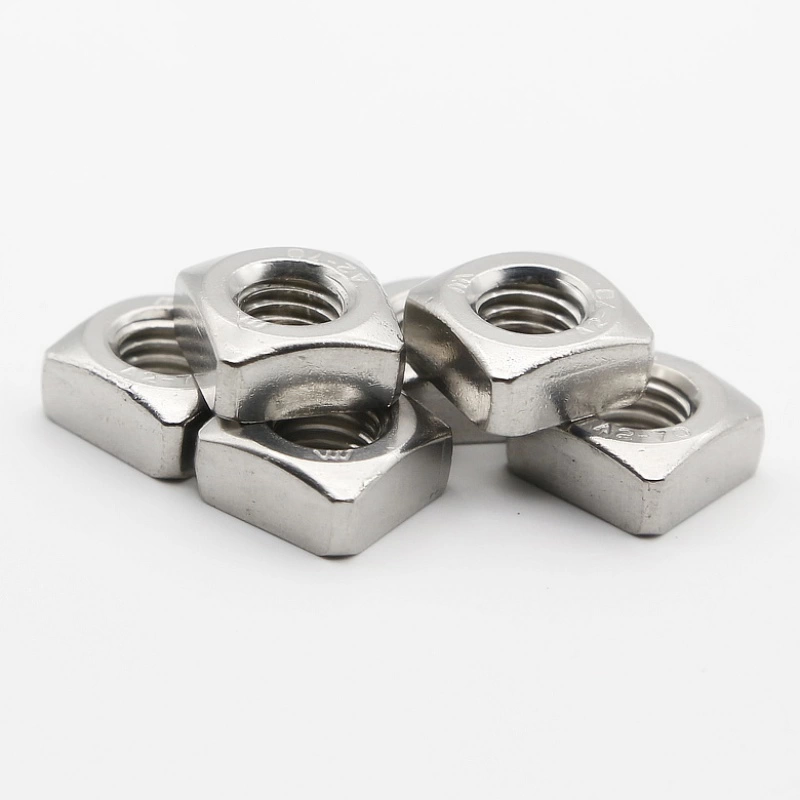

Hex Rivet Nuts for Secure and Reliable Fastening Solutions
Dec . 14, 2024 21:40 Back to list
Hex Rivet Nuts for Secure and Reliable Fastening Solutions
Understanding Hex Rivet Nuts An Essential Component in Modern Engineering
In the world of engineering and manufacturing, the details often make the difference between an efficient design and one that incurs costly errors or failures. Among the many fasteners that play a crucial role in assembly, hex rivet nuts stand out due to their versatility and reliability. This article explores the characteristics, applications, and benefits of hex rivet nuts, illuminating why they are an essential component in modern engineering.
What are Hex Rivet Nuts?
Hex rivet nuts, also known as blind rivet nuts or threaded inserts, are fasteners that provide a strong, load-bearing internal thread for thin-walled materials. Constructed typically from materials such as steel, aluminum, or brass, these nuts can be installed in various substrates, allowing for robust and secure fastening solutions. The hexagonal shape of these rivet nuts provides a larger surface area, enabling them to handle higher torque values and resist turning during installation.
The Installation Process
The installation of hex rivet nuts is relatively straightforward, typically executed through a process called “pulling.” This involves inserting the rivet nut into a pre-drilled hole in the base material. When a special tool is used to pull the mandrel, the rivet nut expands and locks itself in place, ensuring a tight fit that can withstand tension and shear forces. One of the significant advantages of hex rivet nuts is that they can be installed from one side of a workpiece, making them ideal for applications where access to both sides is limited.
Applications of Hex Rivet Nuts
hex rivet nuts

Hex rivet nuts have a wide range of applications across various industries. They are highly favored in automotive manufacturing, aerospace, and electronics, where precision and reliability are paramount. In the automotive sector, for example, hex rivet nuts are often used to attach body panels and other structural components without the need for welding or bulky attachments.
In the electronics industry, these fasteners are used to secure electronic enclosures and components, providing a secure point for screws while maintaining the integrity of the housing. Additionally, hex rivet nuts are commonly found in furniture assembly, HVAC installations, and even in the construction of modular buildings.
Advantages of Using Hex Rivet Nuts
One of the most significant benefits of hex rivet nuts is their ability to provide a strong threaded connection while distributing loads evenly over a larger surface area. This characteristic minimizes the possibility of deformation or damage to the surrounding material, especially in softer substrates. Moreover, the installation process does not require additional access to the back of the panel, making them an ideal choice for blind applications.
Another advantage is the flexibility in design that hex rivet nuts offer. They can accommodate various sizes and types of screws, allowing engineers to choose the best fastening solution for their specific needs. Furthermore, these nuts can be easily removed and replaced, facilitating maintenance and repairs without damaging the surrounding material.
Conclusion
In conclusion, hex rivet nuts are an invaluable component in modern engineering, offering strength, versatility, and ease of installation. Their ability to create secure, load-bearing threaded connections in thin materials makes them essential in various industries, from automotive to electronics and beyond. As technology progresses and the demand for lightweight, durable, and efficient assembly solutions increases, hex rivet nuts will continue to play a pivotal role in innovative engineering designs. By understanding their benefits and applications, engineers and manufacturers can make informed decisions about incorporating these fasteners into their projects, ultimately leading to increased efficiency, reduced costs, and improved product performance.
Latest news
-
Hot Dip Galvanized Bolts-About LongZe|High Strength, Corrosion Resistance
NewsJul.30,2025
-
High-Strength Hot Dip Galvanized Bolts - Hebei Longze | Corrosion Resistance, Customization
NewsJul.30,2025
-
Hot Dip Galvanized Bolts-Hebei Longze|Corrosion Resistance&High Strength
NewsJul.30,2025
-
High-Strength Hot-Dip Galvanized Bolts-Hebei Longze|Corrosion Resistance&High Strength
NewsJul.30,2025
-
Hot Dip Galvanized Bolts-Hebei Longze|Corrosion Resistance&High Strength
NewsJul.30,2025
-
Hot Dip Galvanized Bolts - Hebei Longze | Corrosion Resistance, High Strength
NewsJul.30,2025

